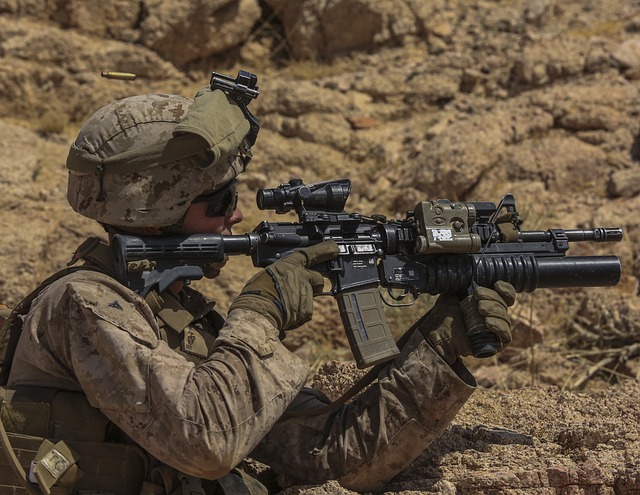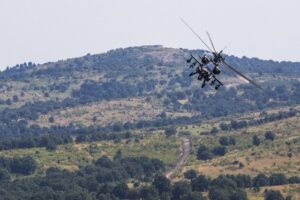
The 101st Airborne Division Flag is a cherished emblem of American military history and the embodiment of the division's ethos of duty and sacrifice. Originating from World War II, it has been present at key operations like D-Day in Normandy and subsequent conflicts in Vietnam, Iraq, and Afghanistan. The flag features an eagle with a laurel wreath and olive branches, symbolizing victory, peace, and the division's commitment to service. It reflects the 101st Airborne Division's storied history, embodying their contributions to global freedom and democracy and honoring the bravery and sacrifices of its soldiers. As a historical artifact and a symbol of unity and pride for current members, the flag continues to represent the division's legacy as an elite rapid-deployment force.
The essence of service duty and sacrifice is a narrative deeply woven into the fabric of nations, symbolized by the storied history and unwavering ethos of the 101st Airborne Division. This article delves into the significance of the 101st Airborne Division Flag as a beacon of these values, tracing its origins and the profound meanings embedded within its design. From the division’s pivotal roles in significant military engagements to the flag’s evolution into an emblem of honor and remembrance, each thread of its history is a testament to the spirit of service that continues to inspire and guide. We will explore how this symbol has come to represent the enduring commitment of those who don the uniform, as well as the collective responsibility to uphold their legacy through personal dedication and community involvement. In honoring the past, present, and future service members, we not only pay tribute to their sacrifice but also foster a society that champions the values they embody. Join us in celebrating and drawing inspiration from the 101st Airborne’s enduring impact on military culture and the broader community.
- The Symbolism and History of the 101st Airborne Division Flag
- – Origins and Design Significance
- – The Role of the 101st Airborne in Military History
- – How the Flag Came to Represent Service Duty and Sacrifice
The Symbolism and History of the 101st Airborne Division Flag

The 101st Airborne Division Flag carries a rich tapestry of symbolism and history, encapsulating the ethos of service, duty, and sacrifice that has defined its storied past. Originating in World War II, the flag’s origins lie with the division’s participation in the D-Day invasion at Normandy. It became synonymous with daring operations, notably the airborne landing behind enemy lines, which played a pivotal role in the liberation of Europe. The flag, marked with a eagle holding an olive branch in one talon and a laurel wreath in the other, signifies peace and victory—a duality that reflects the division’s commitment to both achieving objectives and preserving harmony. Throughout its history, the 101st Airborne Division Flag has flown during significant engagements, from the jungles of Vietnam to the deserts of Iraq and Afghanistan, each time symbolizing the bravery and dedication of its troops. It stands as a testament to the division’s legacy of service and sacrifice, a tradition that continues to be upheld by the men and women of the modern 101st Airborne Division. The flag remains an enduring emblem of American airborne forces, representing the values of readiness and resilience that are integral to its existence.
– Origins and Design Significance

The 101st Airborne Division Flag is an emblem steeped in American military history, representing the values of service duty and sacrifice that are intrinsic to the ethos of the 101st Airborne Division. Originating during World War II, this flag became a symbol of bravery and resilience as it accompanied the division on its pivotal missions, including the D-Day invasion at Normandy. Its design, featuring an eagle holding a wreath and dipped in olive branches, encapsulates the division’s commitment to defense and peacekeeping. The flag’s central motif, an eagle clutching a laurel wreath, symbolizes victory and honor, while the olive branches signify peace and the desire for conflict to be a last resort. This flag was officially adopted as the emblem of the 101st Airborne Division in 1943, and since then, it has been flown during every major operation, becoming a tangible representation of the division’s history and the values it stands for. The flag’s presence on the battlefield is not merely a symbol but a testament to the division’s unwavering dedication to service and the ultimate sacrifice many of its members have made in defense of freedom and democracy around the globe. Its significance as a design lies in its ability to evoke a sense of unity, pride, and remembrance among those who serve under its emblem, reminding all who see it of the division’s storied legacy and the values it embodies.
– The Role of the 101st Airborne in Military History

The 101st Airborne Division, a component of the United States Army, has played a pivotal role in various significant military engagements since its inception during World War II. Known for its rapid deployment capabilities and commitment to service duty, the division’s emblematic symbol, the 101st Airborne Division Flag, often referred to as the “Screaming Eagle,” has become synonymous with the values of courage, sacrifice, and readiness. The flag, a symbol of pride and unity, represents the division’s storied history which includes D-Day in Normandy, where the airborne troops played a crucial role in establishing a vital foothold for the Allied forces. The flag has flown over battles in the jungles of Vietnam, the deserts of Iraq, and the mountains of Afghanistan, each time embodying the division’s unwavering commitment to their country and the principles they stand for. It is not merely a banner but a testament to the shared experiences and collective resolve of the soldiers who have served under its colors, a reminder of the sacrifices made in the defense of freedom and democracy. The 101st Airborne Division Flag continues to inspire new generations of soldiers, symbolizing the division’s legacy as an elite rapid-deployment force that is always prepared to answer the nation’s call.
– How the Flag Came to Represent Service Duty and Sacrifice

The 101st Airborne Division Flag, a symbol deeply interwoven into the fabric of American military history, has come to embody the principles of service duty and sacrifice. Its origins date back to World War II, when General William C. Lee, the founder of the 101st Airborne Division, sought a way to inspire his paratroopers. The flag was designed by Lieutenant Colonel Joseph E. McAleer, who added an eagle holding a shield upon which were three stars and a scroll bearing the division’s motto “Death from Above.” Since its inception, the flag has been carried into battle by the brave soldiers of the 101st Airborne, each deployment reinforcing its significance as a symbol of the courage and commitment that service members exhibit. The flag became a testament to the countless acts of heroism and selflessness displayed by the division’s troops throughout their missions, from Normandy to Vietnam and beyond. Its presence serves as a constant reminder of the values it represents: duty, honor, and the willingness to sacrifice for one’s country and comrades. As a result, the 101st Airborne Division Flag is not only a representation of the division’s history but also a powerful emblem honoring all who serve with valor and dedication.
The 101st Airborne Division Flag stands as a potent symbol of service, duty, and sacrifice, embodying the ethos of those who have donned its colors. Its origins and design intricately weave a narrative of American military history, reflecting the division’s pivotal roles in key conflicts that have shaped our world. The flag, through its storied past, has transcended its initial purpose to become an emblem of commitment and courage, inspiring present and future generations who continue to uphold the values it represents. As a nation, we honor the legacy of the 101st Airborne Division Flag, not only for its historical significance but also for the profound meaning it holds in the hearts of those who serve. It is a testament to the enduring spirit of selflessness and the unwavering dedication to duty that defines service members across all branches of the armed forces.






